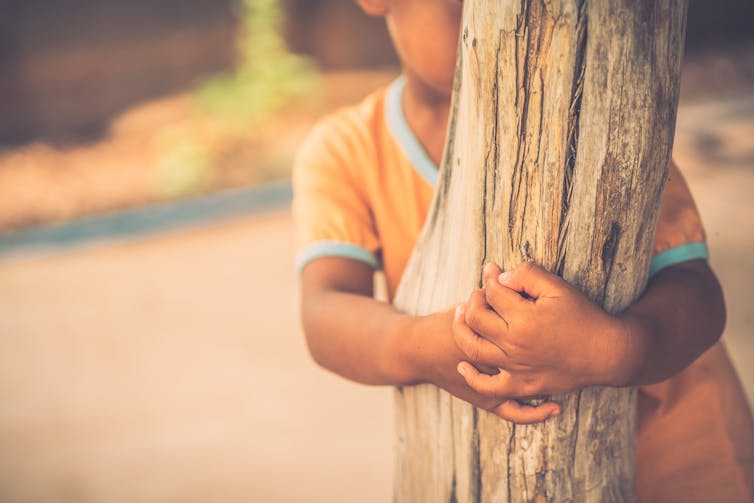What’s the distinction? is a brand new editorial product that explains the similarities and variations between generally confused well being and medical phrases, and why they matter.
The phrases “shyness” and “social anxiousness” are sometimes used interchangeably as a result of they each contain feeling uncomfortable in social conditions.
Nonetheless, feeling shy, or having a shy character, isn’t the identical as experiencing social anxiousness (quick for “social anxiousness dysfunction”).
Listed here are among the similarities and variations, and what the excellence means.
How are they related?
It may be regular to really feel nervous and even pressured in new social conditions or when interacting with new folks. And everybody differs in how comfy they really feel when interacting with others.
For people who find themselves shy or socially anxious, social conditions could be very uncomfortable, demanding and even threatening. There could be a robust want to keep away from these conditions.
People who find themselves shy or socially anxious might reply with “flight” (by withdrawing from the scenario or avoiding it solely), “freeze” (by detaching themselves or feeling disconnected from their physique), or “fawn” (by making an attempt to appease or placate others).
A posh interplay of organic and environmental components can also be thought to affect the event of shyness and social anxiousness.
For instance, each shy youngsters and adults with social anxiousness have neural circuits that reply strongly to demanding social conditions, comparable to being excluded or ignored.
People who find themselves shy or socially anxious generally report bodily signs of stress in sure conditions, and even when anticipating them. These embody sweating, blushing, trembling, an elevated coronary heart fee or hyperventilation.
How are they totally different?
Social anxiousness is a diagnosable psychological well being situation and is an instance of an anxiousness dysfunction.
For individuals who battle with social anxiousness, social conditions – together with social interactions, being noticed and performing in entrance of others – set off intense concern or anxiousness about being judged, criticised or rejected.
To be recognized with social anxiousness dysfunction, social anxiousness must be persistent (lasting greater than six months) and have a big destructive impression on essential areas of life comparable to work, faculty, relationships, and identification or sense of self.
Many adults with social anxiousness report feeling shy, timid and missing in confidence after they had been a toddler. Nonetheless, not all shy youngsters go on to develop social anxiousness. Additionally, feeling shy doesn’t essentially imply an individual meets the factors for social anxiousness dysfunction.
Individuals differ in how shy or outgoing they’re, relying on the place they’re, who they’re with and the way comfy they really feel within the scenario. That is notably true for kids, who generally seem reserved and shy with strangers and friends, and outgoing with identified and trusted adults.
Particular person variations in temperament, character traits, early childhood experiences, household upbringing and atmosphere, and parenting type, can even affect the extent to which individuals really feel shy throughout social conditions.

249 Anurak/Shutterstock
Nonetheless, folks with social anxiousness have overwhelming fears about embarrassing themselves or being negatively judged by others; they expertise these fears persistently and throughout a number of social conditions.
The depth of this concern or anxiousness usually leads folks to keep away from conditions. If avoiding a scenario isn’t potential, they could have interaction in security behaviours, comparable to their telephone, sporting sun shades or rehearsing dialog subjects.
The impact social anxiousness can have on an individual’s life could be far-reaching. It might embody low vanity, breakdown of friendships or romantic relationships, difficulties pursuing and progressing in a profession, and dropping out of examine.
The impression this has on an individual’s potential to steer a significant and fulfilling life, and the misery this causes, differentiates social anxiousness from shyness.
Kids can present related indicators or signs of social anxiousness to adults. However they could additionally really feel upset and teary, irritable, have mood tantrums, cling to their dad and mom, or refuse to talk in sure conditions.
If left untreated, social anxiousness can set youngsters and younger folks up for a way forward for missed alternatives, so early intervention is essential. With skilled and parental help, endurance and steerage, youngsters could be taught methods to beat social anxiousness.
Why does the excellence matter?
Social anxiousness dysfunction is a psychological well being situation that persists for individuals who don’t obtain ample help or therapy.
With out therapy, it might result in difficulties in schooling and at work, and in growing significant relationships.
Receiving a analysis of social anxiousness dysfunction could be validating for some folks because it recognises the extent of misery and that its impression is extra intense than shyness.
A analysis can be an essential first step in accessing applicable, evidence-based therapy.
Completely different folks have totally different help wants. Nonetheless, medical observe pointers advocate cognitive-behavioural remedy (a sort of psychological remedy that teaches folks sensible coping expertise). That is usually used with publicity remedy (a sort of psychological remedy that helps folks face their fears by breaking them down right into a collection of step-by-step actions). This mix is efficient in-person, on-line and in short therapies.

ImYanis/Shutterstock
For extra help or additional studying
On-line assets about social anxiousness embody:
We thank the Black Canine Institute Lived Expertise Advisory Community members for offering suggestions and enter for this text and our analysis.








